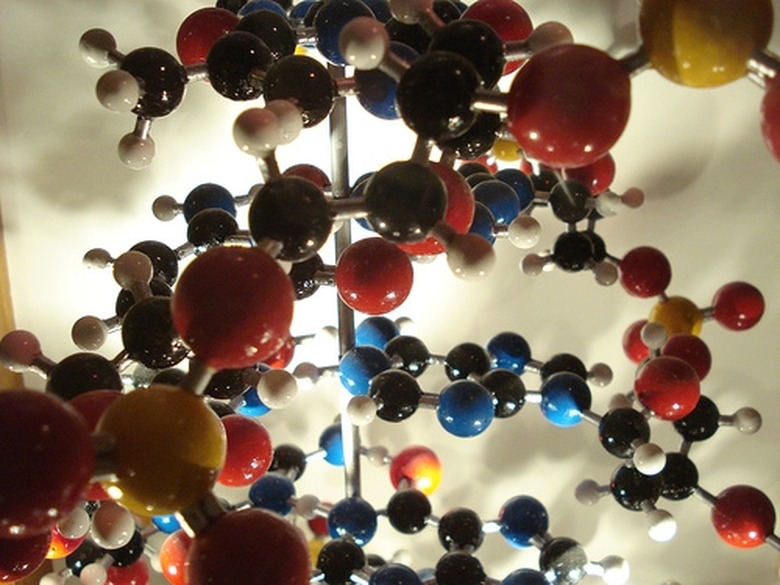How Are Protons And Electrons Similar?
Atoms are said to be the building blocks of the universe. They are the smallest particles into which any element can be divided without losing its identity. Looking at the structure of a single atom of any element provides enough information to identify the material. Each element is comprised of atoms that have the same configuration of electrons, protons and neutrons.
Identification
Identification
Electrons are weightless sub-atomic particles that carry a negative electrical charge. They spin around the nucleus of an atom in a pattern of electron shells. Each electron shell can only contain a certain number of electrons. Some scientists describe the movement of the orbiting electrons as being akin to a wave or a cloud.
Features
Features
Protons are also sub-atomic particles that carry a positive electrical charge. They exist in the nucleus of the atom. The positively charged protons attract the electrons to balance the electrical charge within the atom. For this reason, atoms always contain the same number of protons and electrons. Charged particles are ions, not atoms.
Considerations
Considerations
Another kind of sub-atomic particle, the neutron, is in the nucleus of every atom which has more than one proton. According to Anthony Carpi of the City University of New York, neutrons act "like glue" to hold the nucleus together. Otherwise, he explains, the protons would repel each other, because they share a positive charge. This would be similar to what happens when you attempt to connect the north poles of two magnets. The magnets refuse to stick together.
Function
Function
Each element has been assigned an atomic number that indicates the number of protons that are in the nucleus of each atom. Since there are the same number of protons and electrons in an atom, the atomic number also indicates how many electrons there are. Each element also has an atomic weight. This is approximately equal to the sum of protons and neutrons. You can locate the atomic number and weight of each element on the Periodic Table of the Elements.
Expert Insight
Expert Insight
Electrons and protons are similar in that both are charged sub-atomic particles. There is an equal number of electrons and protons in the atoms of each element, which corresponds to the atomic number that has been assigned to the element. They are different in that electrons are virtually weightless, while protons have measurable weight. Electrons orbit the nucleus of an atom, attracted to the positively charged protons inside the same nucleus.
The 1906 Nobel Prize was awarded to J. J. Thompson for his work describing electrons. Ernest Rutherford discovered protons in 1918.
Cite This Article
MLA
Barker, Lesley. "How Are Protons And Electrons Similar?" sciencing.com, https://www.sciencing.com/how-protons-electrons-similar-4690381/. 24 April 2017.
APA
Barker, Lesley. (2017, April 24). How Are Protons And Electrons Similar?. sciencing.com. Retrieved from https://www.sciencing.com/how-protons-electrons-similar-4690381/
Chicago
Barker, Lesley. How Are Protons And Electrons Similar? last modified August 30, 2022. https://www.sciencing.com/how-protons-electrons-similar-4690381/
